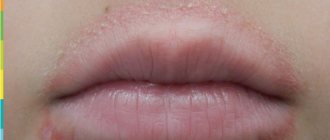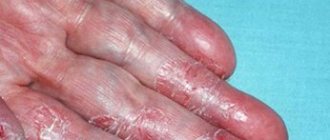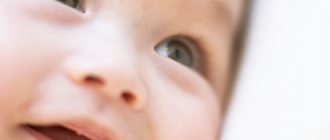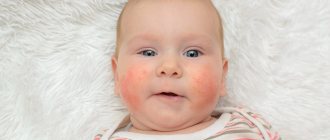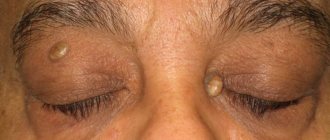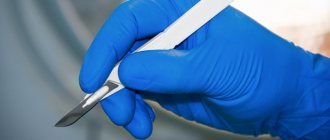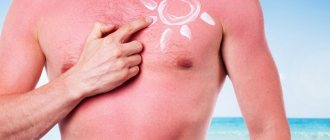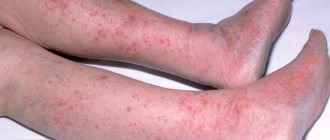Feel itchy on your feet? Is your skin red and flaky? Such symptoms are characteristic of a specific disease called varicose dermatitis. This is not the simple dermatitis that many of us imagine.
Varicose dermatitis is a skin lesion that occurs in places where the veins have ceased to fulfill their functional purposes. It is not an independent disease. Occurs as a result of vascular damage by varicose veins and thrombosis.
In case of damage to the extremities by varicose dermatitis, it is necessary to contact a phlebologist, since first of all it is necessary to treat the cause of the disease, and not the affected area.
Varicose dermatitis
Varicose dermatitis is a skin disease in which the skin located above the veins becomes inflamed, begins to peel and itch.
This occurs when the function of the veins is disrupted due to varicose veins. The venous walls gradually become thinner, and liquid blood components begin to leak through them. Because of this, inflammation develops, which manifests itself on the skin as peeling and inflammation that is very itchy. Scratching wounds leads to an increase in the inflammatory response. Varicose dermatitis on the legs has a chronic course, so the skin condition should be constantly monitored. If the disease is started, trophic ulcers are likely to form.
Heparin ointment
Heparin ointment for varicose veins is the most popular and most inexpensive; the active substance of this ointment is heparin. This remedy perfectly reduces pain and heaviness in the legs, “Heparin ointment” stimulates the outflow of lymph and thins the blood. Ointment for varicose veins has almost no contraindications (the only thing is hemophilia) and side effects, is sold without a prescription and helps with the first stages of varicose veins. You will feel the first positive effect of heparin ointment after two weeks of use.
Many patients note the low cost and high effectiveness of this remedy for varicose veins. Heparin ointment is safe and well tolerated.
Heparin ointment
OJSC "Nizhpharm", Russia
Prevention and treatment of thrombophlebitis of superficial veins;
post-injection and post-infusion phlebitis; external hemorrhoids; inflammation of postpartum hemorrhoids; trophic ulcers of the leg; elephantiasis; superficial periphlebitis; lymphangitis; superficial mastitis; localized infiltrates and edema; injuries and bruises without violating the integrity of the skin (including muscle tissue, tendons, joints); subcutaneous hematoma. from 38
5.0 1 review
2313
- Like
- Write a review
Reasons for appearance
The main cause of varicose dermatitis of the lower extremities is a violation of venous circulation. This condition develops as a result of varicose veins, thrombophlebitis, and venous thrombosis of blood vessels. The development of the disease is provoked by:
- long stay “on your feet” – work in a standing position, long walking;
- cardiovascular diseases;
- overweight;
- traumatic lesions of veins;
- a “sedentary” lifestyle, due to which an increased load is placed on the venous valves.
Experts' opinion
TM La-Cri products are recommended by the Union of Pediatricians of Russia. Clinical studies conducted by specialists have proven the high efficiency, safety and tolerability of products, including for daily skin care of children with mild and moderate forms of atopic dermatitis and during remission, accompanied by a decrease in the quality of life of patients. As a result of therapy, a decrease in the activity of the inflammatory process, a decrease in dryness, itching and flaking was noted.
Sources:
- Smirnova G.I. Atopic dermatitis and skin infections in children, Russian pediatric journal, 2014 https://cyberleninka.ru/article/v/atopicheskiy-dermatit-i-infektsii-kozhi-u-detey
- G.V. Molokova, E.V. Bukina, Diaper dermatitis in children with sensitive skin, Journal of Dermatology and Allergology, 2019 https://cyberleninka.ru/article/v/pelenochnyy-dermatit-u-detey-s-chuvstvitelnoy-kozhey
- N.L. Rybkina, Modern approaches to newborn skin care: pediatrician tactics, Journal of Modern Clinical Medicine, 2014 https://cyberleninka.ru/article/v/sovremennye-podhody-k-uhodu-za-kozhey-novorozhdennogo-taktika-pediatra
Photos of dermatitis
Photo album on the diseaseSymptoms
Varicose dermatitis on the legs develops in 3 main stages:
- The skin in the vein area is slightly changed. The skin becomes purple-reddish and periodically itches. During palpation, small compactions can be felt. The skin peels and becomes colder to the touch. Sometimes you can see transparent bubbles.
- Swelling and associated soreness are observed in the affected areas. Peeling of the skin is noticeable. The itching becomes intense. Transparent bubbles are very noticeable and burst from time to time. In place of the burst bubbles, a wound surface appears. Palpation of the affected areas reveals lumps resembling wen.
- The number of transparent bubbles increases significantly. The skin becomes brownish. There are so many burst bubbles that the area where they were located becomes wet. The patient suffers from severe itching. The skin becomes covered with ulcers that are prone to suppuration.
Detragel
In addition to sodium heparin, this gel for varicose veins contains phospholipids and horse chestnut extract. Thanks to this complex of active substances, this remedy for varicose veins turned out to be as effective as possible. "Detragel" has antithrombotic properties, being an excellent anticoagulant. With a course of use of Detragel, congestion in the superficial veins is reduced, the capillary wall is strengthened, and swelling disappears. Detragel also reduces inflammation. This gel is often prescribed for bruises (contusions and sprains). Detragel should be applied to the skin without damage with light movements three times a day. The remedy for varicose veins is used under compression garments and bandages. The course of treatment (if the doctor has not prescribed longer) is no more than 15 days.
Detragel
Treatment
Treatment is aimed at:
- elimination of inflammatory foci;
- reduction of swelling;
- increasing the intensity of blood circulation in the affected areas;
- moisturizing the seal area;
- sanitization of the affected area, cleaning it from contaminants, preventing the appearance of pus.
Features of therapy depend on the stage of development of the disease.
- At the 1st stage, tablets are prescribed for varicose dermatitis, which increase the contractile properties of the vein walls. The constant use of compression garments is indicated, which improves the functioning of blood vessels, relieves fatigue, and prevents the development of edema. Antihistamines are prescribed to relieve inflammation and itching. To prevent the skin from cracking, with varicose dermatitis it should be lubricated with creams.
- At stage 2, the treatment method remains the same, but stronger agents are used. For example, for the treatment of varicose dermatitis, not only antihistamines, but also hormonal ointments are prescribed. Inflamed areas are lubricated with antiseptics. To prevent varicose dermatitis from progressing to the next stage, your doctor may prescribe antibiotics.
- At the 3rd stage, surgical intervention is possible, aimed at eliminating vascular obstruction and preventing the development of emerging trophic ulcers. During the operation, necrotic tissue and an enlarged section of the vein are excised. Measures are also taken to eliminate acute inflammation. The ulcers are washed and treated with antiseptic drugs. Drugs are injected to increase blood permeability in problem vessels. Elastic bandages are used almost constantly. Antihistamines are also administered intravenously. If there are indications, surgical intervention should not be delayed, since the transition of trophic ulcers to a chronic form can lead to disability of the patient. At the same time, the opportunity to restore lost health is minimal.
You can read about the drugs that are prescribed during the treatment of pathology at https://apteka911.ua/medical-uses/varikoznyiy-dermatit-s17790. What creams and ointments to use for varicose dermatitis in a particular case should be decided by a specialist. The doctor also chooses the method of facilitating the movement of blood through the vessels (systemic use of blood-thinning drugs, local injections). When varicose dermatitis is diagnosed, ointments are selected so as not to duplicate the active ingredients that are administered with other dosage forms (for example, by injection).
Lyoton
"Lioton" gel for varicose veins is one of the most frequently prescribed remedies. The active substance of Lyoton is sodium heparin (direct anticoagulant). Gel "Lioton" is prescribed for varicose veins, thrombophlebitis, swelling of soft tissues, hematomas after operations. Contraindications include age under 18 years, wound surfaces, and a tendency to bleed. If you have the initial stage of varicose veins, the course of treatment should last 7-21 days (the ointment must be rubbed in twice a day). If varicose veins are chronic, the duration of treatment should last at least six weeks. Patients who use Lyoton say that this gel for varicose veins perfectly relieves swelling and reduces pain in the legs. The product was especially appreciated by office workers who have to sit for a long time, as well as women who often wear high-heeled shoes.
Lyoton 1000
Berlin-Chemie/Menarini, Germany
Prevention and therapy: deep vein thrombosis, pulmonary embolism (including in diseases of the peripheral veins), coronary artery thrombosis, thrombophlebitis, unstable angina, acute myocardial infarction, atrial fibrillation (including accompanied by embolism), DIC- syndrome, prevention and therapy of microthrombosis and microcirculation disorders, renal vein thrombosis, hemolyticouremic syndrome, mitral heart disease (prevention of thrombosis), bacterial endocarditis, glomerulonephritis, lupus nephritis.
Prevention of blood clotting during operations using extracorporeal circulatory methods, during hemodialysis, hemosorption, peritoneal dialysis, cytapheresis, forced diuresis, when flushing venous catheters. Preparation of non-clotting blood samples for laboratory purposes and blood transfusions. A product for the prevention and treatment of hematomas. from 286
5.0 1 review
727
- Like
- Write a review
Frequently asked questions about dermatitis
How to recognize varicose dermatitis?
Varicose dermatitis is easily recognized by redness, peeling and itching in the area where the veins pass.
How long does it take to treat varicose dermatitis?
The sooner tablets and ointments for varicose dermatitis are used, the more effective the treatment will be. Since this is a chronic disease prone to relapse, therapy can take several years.
Which doctor treats varicose dermatitis?
To cure the disease, you should make an appointment with a phlebologist.
Phlebodia
Cream for varicose veins "Phlebodia" is intended for the treatment of the disease in the early stages, as well as for the prevention of varicose veins. Phlebodia contains bioflavonoids, which relieve the feeling of heaviness in the legs and restore ease of movement and mobility. Menthol cools tired feet and cares for the skin. You can use Phlebodia ointment for varicose veins from the age of 16. Rub the product in light circular motions from the ankle to the thigh twice a day. The effect of using Phlebodia is noticeable immediately: swelling goes away and lightness appears in the legs. This cream for varicose veins is not sticky or greasy, and does not stain clothes. "Phlebodia" can be used both for the treatment of varicose veins in the early stages, as soon as spider veins appear, and for prevention.
Phlebodia
Dzintars, Latvia
The cosmetic product Phlebodia® cream-gel reduces discomfort in the legs, helps relieve the feeling of heaviness and fatigue.
Helps tired legs feel light and comfortable. The cream-gel contains the natural bioflavonoid diosmin. Bioflavonoids have a positive effect on the veins of the legs and help prevent the formation of a “venous network”. Thanks to its light texture, Flebodia® cream-gel is quickly absorbed without leaving a feeling of stickiness or greasy shine on the skin. Menthol, which is part of the cream-gel, has an additional cooling effect. from 419
1689
- Like
- Write a review
